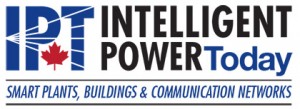Motor Protection
Bearing Protection of Inverter-duty Motors
Predictive Maintenance Trends Using Motor Protection Relays
Motor Protection
Coordinating Motor Protection Relays
Motor Protection Relays (MPRs) are critical for safeguarding motors from various electrical hazards. However, integrating these relays into broader system protection schemes presents challenges, particularly regarding selective operation and coordination with upstream protective devices.
Electric motors are the workhorses of industry, powering machinery across various sectors. Protecting these motors from electrical faults is crucial for ensuring operational continuity and minimizing downtime. Motor protection relays (MPRs) play a vital role in this protection scheme. However, coordinating MPR operation with overall system protection presents several challenges. This article explores these challenges and examines strategies for achieving effective coordination.
Visit Our Electrical Protection Study Course
The Importance of Coordination
Electrical power systems are hierarchical, with interconnected components like transformers, feeders, and motors. When a fault occurs, the ideal scenario is for the closest protective device (usually the MPR) to isolate the faulted motor while allowing healthy upstream equipment to remain operational. This minimizes service disruptions and equipment damage. Achieving this selective tripping requires effective coordination between the MPR and other protective devices in the system.
Challenges in Motor Protection Coordination
Coordinating MPRs with system protection presents several complexities:
- Motor Starting Characteristics: During motor startup, inrush currents can be several times higher than...
Related Articles
Predictive Maintenance Trends Using Motor Protection Relays
Predictive maintenance represents a significant shift in how motor protection relays (MPRs) are utilized in industrial settings. By leveraging advanced analytics and machine learning algorithms, MPRs are now instrumental in preempting motor wear and failure, marking a proactive approach to...
Motor Thermal Overload Protection
Motor Protection Relays (MPRs) are crucial in safeguarding motors from thermal overload, which can cause significant damage if not properly managed. These relays protect motors by monitoring the motor current and calculating the thermal load, but achieving accurate thermal overload protection...
Motor Protection Relay Advancements Explained
Motor Protection Relays (MPRs) are evolving rapidly, integrating cutting-edge technologies to offer superior protection for motors in various industrial applications. These advancements not only enhance the reliability and efficiency of motor operation but also bring sophisticated diagnostic and...
Improving Energy Efficiency Through Motor Protection
Motor Protection Relays (MPRs) are crucial in safeguarding motors against various operational threats that can lead to inefficiency and increased energy consumption. By ensuring optimal motor performance and protecting against potential issues, MPRs play a vital role in enhancing energy efficiency...

Compatibility Issues with Generator-Backed Power Systems
Line-interactive uninterruptible power supply (UPS) systems play a vital role in maintaining seamless operation during power outages. Their integration with backup generators, however, can pose challenges regarding synchronization and power quality. While both UPS systems and generators serve as...
Improving Energy Efficiency Through Motor Protection
Motor Protection Relays (MPRs) are crucial in safeguarding motors against various operational threats that can lead to inefficiency and increased energy consumption. By ensuring optimal motor performance and protecting against potential issues, MPRs play a vital role in enhancing energy efficiency...
Motor Protection in Critical Industrial Processes
Motors are the workhorses of industry, driving essential processes and machinery in sectors ranging from manufacturing to utilities. Motor Protection Relays (MPRs) serve as guardians for these critical components, ensuring their safe and efficient operation. This article delves into the...
Evolution of Motor Protection with VFDs
The integration of Variable Frequency Drives (VFDs) in motor control has revolutionized the way motors are operated and protected. VFDs offer enhanced control over motor speed and torque, leading to improved efficiency and performance. However, they also introduce unique challenges in motor...
Predictive Maintenance Trends Using Motor Protection Relays
Predictive maintenance represents a significant shift in how motor protection relays (MPRs) are utilized in industrial settings. By leveraging advanced analytics and machine learning algorithms, MPRs are now instrumental in preempting motor wear and failure, marking a proactive approach to...
Motor Protection Relay Advancements Explained
Motor Protection Relays (MPRs) are evolving rapidly, integrating cutting-edge technologies to offer superior protection for motors in various industrial applications. These advancements not only enhance the reliability and efficiency of motor operation but also bring sophisticated diagnostic and...
